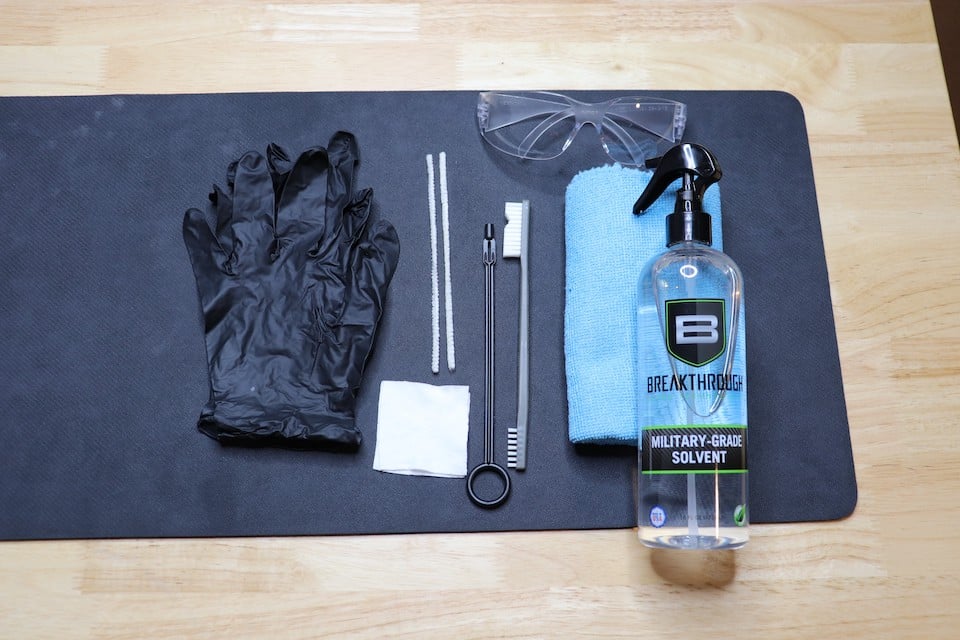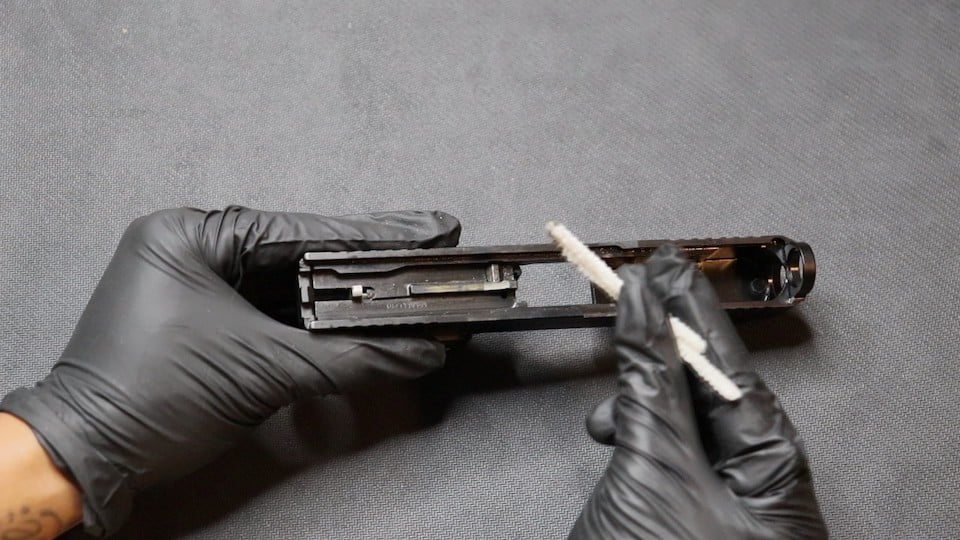Women’s Outdoor News and Avery Skipalis bring you a video on cleaning and inspecting your handgun. Since we just started a new year, we figured this would be an excellent time for you to give your handgun a little Tender Love and Cleanliness (TLC). We will explain a few essential things to consider. Before you start this process, consider reading the owner’s manual. It will explain how to clean and disassemble your firearm safely.
Sponsored by GLOCK
Previously, we published a post for new handgun owners, and gave tips on how to inspect a firearm. However, with this being the start of a new year, we feel that it’s important for all gun owners to follow these guidelines, and inspect and clean all firearms yearly. Below, we’ve expanded on our original tutorial, and given a supplies list. We’ve also covered the bases of inspecting firearms, with the acronym BMWCLS. Happy New Year, and be sure to inspect and clean all of your firearms!

Before you begin this process, ensure you remove all live ammunition from the area where you’re inspecting and cleaning your firearm. It would be best to do this in a well-lit and ventilated place. Wearing gloves and eye protection are highly encouraged. Eye protection will protect your eyes if any springs pop out. Now, it’s time to clear out your handgun, field strip (disassemble it down to its major components), perform your inspection, and clean your firearm. You can do this using the acronym BMWCLS.
(B) Broken – Check for any broken or cracked parts. Pay close attention to the barrel, slide, and locking block.
(M) Missing – Ensure that you’re not missing any parts to your firearm, such as springs or other small components.
(W) Worn – inspect to verify that no parts show signs of excessive wear.
(C) Cleanliness – is your firearm clean and serviceable?
(L) Lubrication – is the handgun adequately lubricated? Metal-to-metal surfaces should have a light coat of lubrication.
(S) Spring Tension – check springs to ensure they’re not worn out and still have plenty spring tension. As a reminder, be sure to check the springs on your magazines. Springs on magazines get worn out over time as well.

Knowing how to clean and inspect your handgun is an important skill to have. Try performing cleaning on a regular schedule. You can schedule cleaning on your calendar to ensure it gets accomplished. Having a clean firearm is about more than just having an attractive-looking firearm. When your handgun is clean, it’s also a reliable and safe gun.
Avery Skipalis is the owner of Skip’s Tactical Solutions, an organization that focuses on empowering women, men and children to make sure that no one else becomes a victim. She gained her firearms experience from the military where she’s been a military firearms instructor for 10.5 years. She’s also a certified NRA rifle and pistol instructor and Glock Advanced Armorer since 2015. She’s attended Sig Sauer Academy, FNH, Special Operations Command Armorers courses as well as multiple Advanced Shooting Schools across the United States. She resides in Florida with her husband and 2 kids. She’s currently serving in the United States Air Force and loves sharing her passion with others. She thinks it’s important that women also feel like they’re in control of their own safety. View all posts by Avery Skipalis